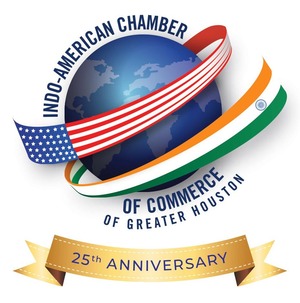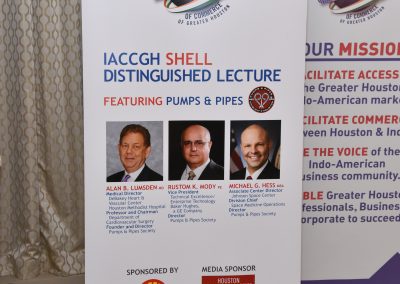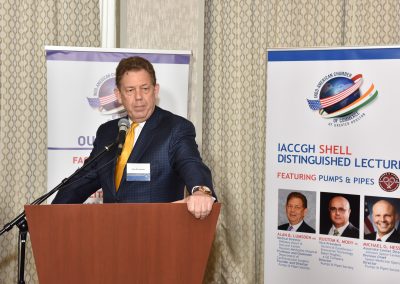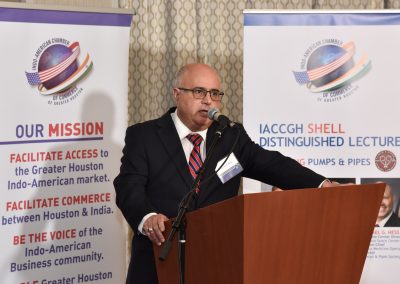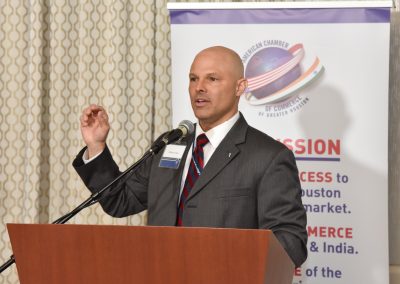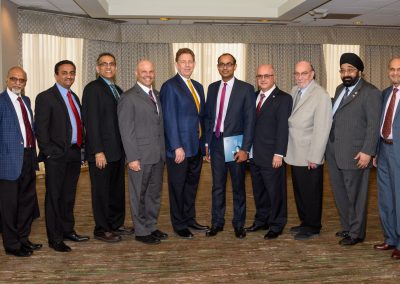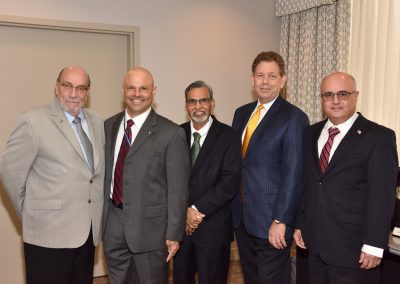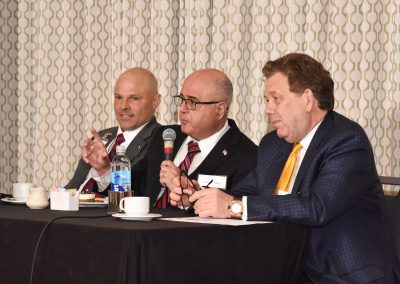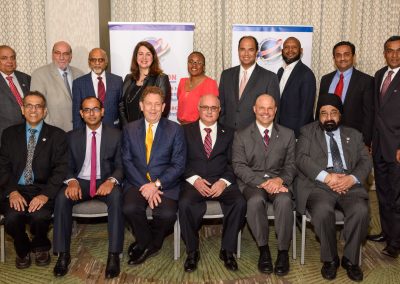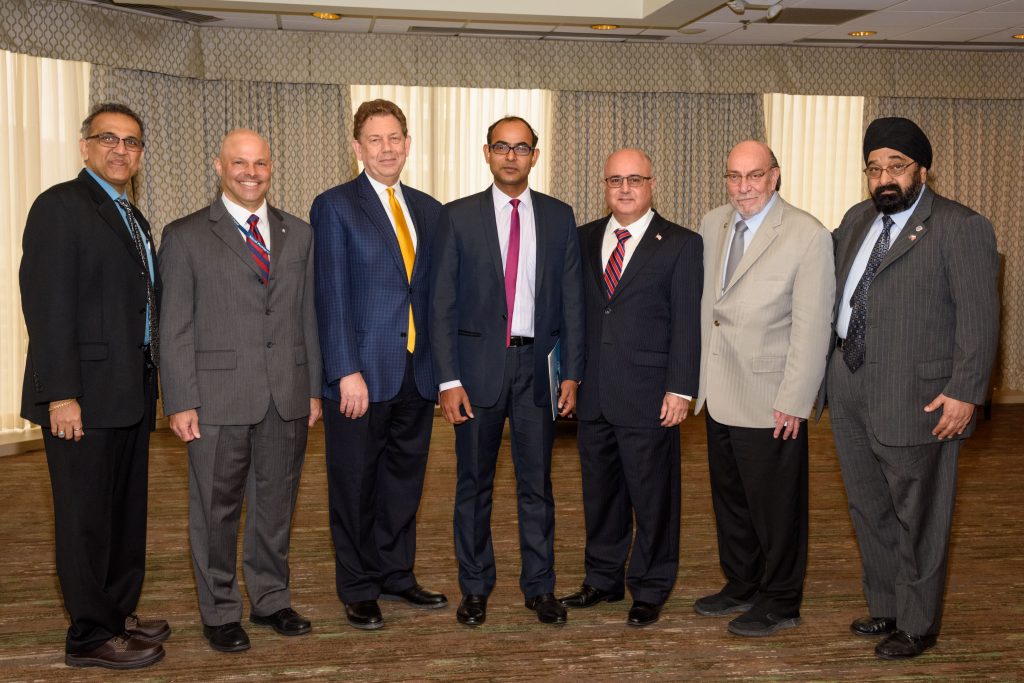
Manu Shah
When Houston’s “centers of excellence” in medicine, energy, and aerospace “looked into each other’s toolkit,” they hit upon breakthrough improvements to problems in artificial heart valves, unclogging oil pipelines and studying physiological changes in space travel.
This was the focus of the IACCGH Shell Distinguished lecture held at DoubleTree by Hilton. Keynote Speakers from the Pumps and Pipes Society – Co-founder Dr. Alan Lumsden and Directors Rustom Mody and Michael Hess shared the dais on 28th March to explain how education, collaboration, and communication between Houston’s top three industries offered “a fresh set of eyes” to identify solutions and swap technologies.
President Swapan Dhairyawan welcomed the gathering and emphasized the importance that diversity and collaboration played in the Chamber’s mission. This principle of partnership with diverse economic agencies enabled the Chamber to leverage its relationship with its Resource partners to ensure events that are relevant and useful to members. Executive Director Jagdip Ahluwalia highlighted the Chamber’s efforts in co-hosting a series of events to help small businesses affected by Harvey’s devastation. This will be done with the support of Shell and Liftfund, a non-profit organization.
In his opening address, Dr. Lumsden, a cardiovascular surgeon and medical director at the Houston Methodist Hospital explained how P & P, now in its 11th year, get people together from different backgrounds and countries to “approach a problem from a fundamentally different direction.” It is a conscious effort, he continued, to overcome a mindset that says “no, that’s not possible” and instead focuses on looking at nontraditional sources for innovative solutions. Imaging is an area in which the collaboration has seen broad success. The organization, he stated, was keen to work closely with the Chamber and expand the program in India.
Vice President of Technical Excellence/Enterprise Technology at Baker Hughes, Rustom Mody also stressed the point that engineers, doctors, and space scientists have “more in common than one might think” and P & P helps industries go “beyond the familiar, connect dots that are unrelated” and come up with a solution. This, he explained, is the reason Baker Hughes was the first company to hire NASA scientists because “diversity fuels innovation.”
Michael Hess, Associate Center Director Johnson Space Center offered a brief description of the International Space Station and described it as “a marvel of what we’ve been able to accomplish as a people.” NASA’s generic long-term strategy, he stated, was to get “humans to Mars” but to do so, the agency was working to enhance commercial flights in the lower orbits. He reiterated the point that there is a great deal of “overlap and learning from each other.” Budget constraints make it even more imperative to partner with other industries to exchange ideas and best practices.
Stephen Igo, director of the Entrepreneurial Institute at the MDHVC, described P & P as an “evolutionary program” and stated that it was looking for more mentors and participation to expand the scope and scale of the program. An informative Q & A session followed after which Deputy Consul General Surendra Adhana did the honors of presenting plaques of appreciation to the distinguished panelists.
